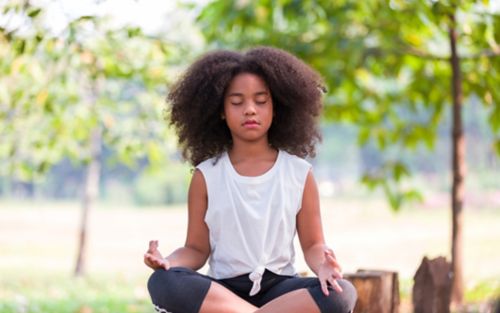Managing anxiety is important. There are a variety of strategies that may help. Talk with your care team to make a plan that works best for your child and their specific situation.
Talk openly: It can be hard to talk with children about fears and worries. It might also be difficult for children to share their worries with adults.
- Look for ways to talk about thoughts and feelings on a regular basis. This makes it easier to have hard conversations when they arise.
- Use a variety of feeling words (such as mad, happy, scared, or nervous) to help children process emotions and talk about anxiety.
- Ask instead of assuming. Use open-ended questions to understand your child’s point of view.
- Recognize and respect your child’s concerns, even when you don’t agree.
- Admit that you sometimes have similar anxious thoughts and feelings. This helps your child know that they are not alone.
- Keep a journal to track thoughts and feelings.
Use coping skills and resources to help manage anxiety: Make it a habit to use coping skills even when things are going well. This will make the strategies easier to use when they are needed. Having more than 1 method to deal with anxiety is also important. Sometimes a usual coping strategy cannot be used or does not help.
- Distraction techniques: Engaging in activities they enjoy can distract children from anxiety-causing thoughts. These may include art therapy, music therapy, and play therapy.
- Mindfulness and relaxation strategies: Your child can learn ways to lessen the effect of stress and anxiety. Examples of relaxation techniques include deep breathing, guided imagery, and muscle relaxation.
- Mind and body practices: Some children find help from mind and body practices such as biofeedback, massage therapy, yoga, and physical exercise. Research shows that these therapies can change nerve signals and chemical messages in the brain to help improve anxiety.
Reach out to friends and family: Social support is important for patients and families facing serious illnesses. Help children and teens stay connected to friends and do usual activities that they enjoy.
Consider support groups: Patients and families often find that it is easier to share their experience with someone who has been there. Joining a support group, taking part in group activities, or making new friends in the hospital can give patients a safe place to talk about anxiety and find ways to cope.
Manage your own anxiety and stress: Stay calm when your child is anxious. Children sense the moods of those close to them. They also learn coping strategies from watching others. Parents and caregivers need to take care of their own mental health. Find ways to manage your own anxiety so that your child can know they can do it too.
Encourage your child to face their fears: Children and teens with anxiety often avoid situations they fear. At first, this may decrease their anxiety. But over time avoidance helps maintain or even worsen anxiety. Praise your child for getting through a hard situation.
Offer security without being overprotective: Parents want to protect their children from both physical and emotional hurt. Offer your child age-appropriate ways to be independent. This helps children develop confidence in their own abilities to solve problems.
Seek help for your child or yourself if anxiety symptoms get worse: Medical needs are often the most important concern when a child is seriously ill. But anxiety can have a negative impact on physical health and medical outcomes. Asking for help is not a sign of weakness. Talk to your care team or mental health provider.





